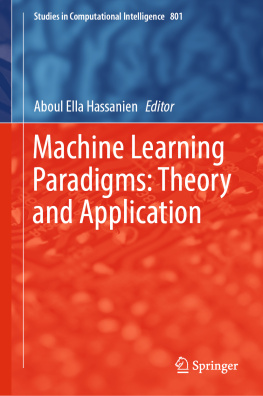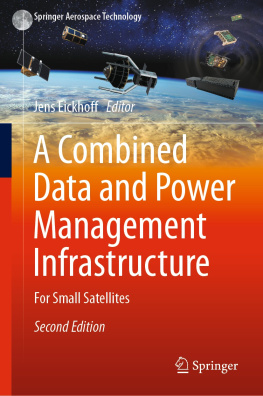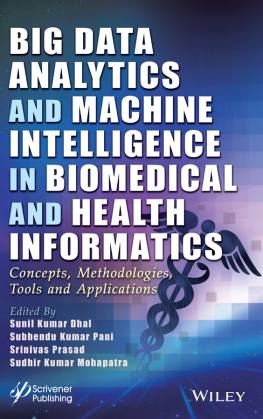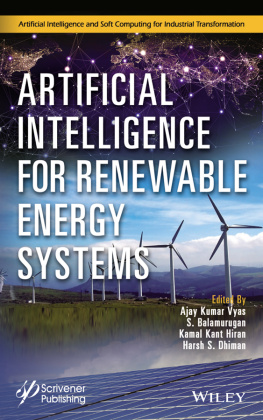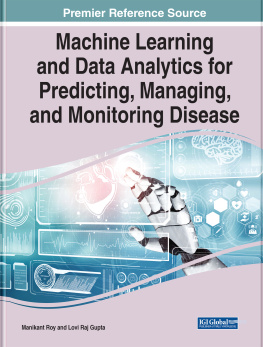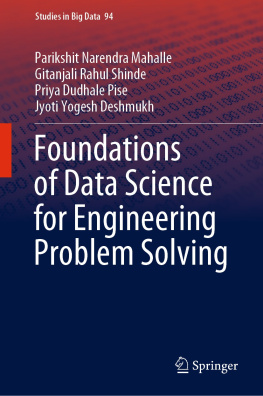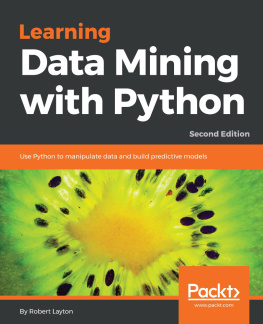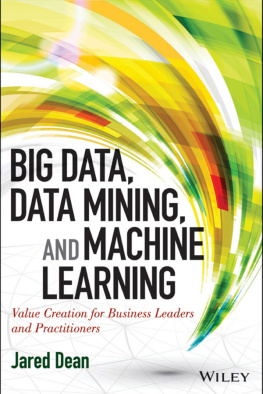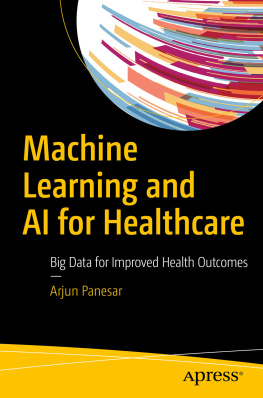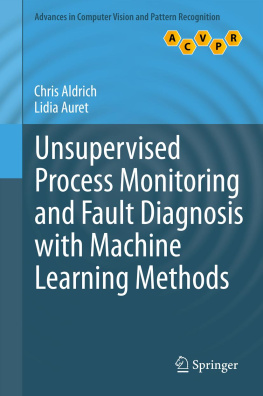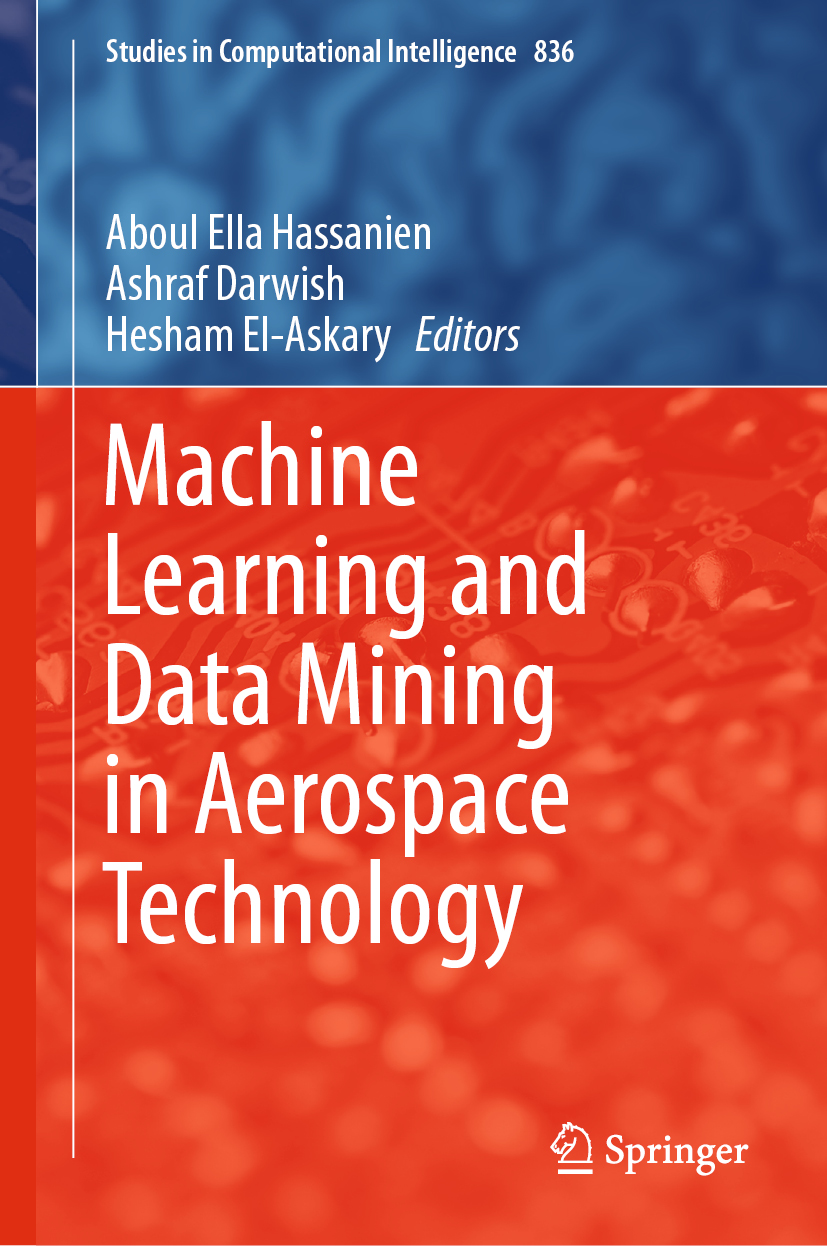Volume 836
Studies in Computational Intelligence
Series Editor
Janusz Kacprzyk
Polish Academy of Sciences, Warsaw, Poland
The series Studies in Computational Intelligence (SCI) publishes new developments and advances in the various areas of computational intelligencequickly and with a high quality. The intent is to cover the theory, applications, and design methods of computational intelligence, as embedded in the fields of engineering, computer science, physics and life sciences, as well as the methodologies behind them. The series contains monographs, lecture notes and edited volumes in computational intelligence spanning the areas of neural networks, connectionist systems, genetic algorithms, evolutionary computation, artificial intelligence, cellular automata, self-organizing systems, soft computing, fuzzy systems, and hybrid intelligent systems. Of particular value to both the contributors and the readership are the short publication timeframe and the world-wide distribution, which enable both wide and rapid dissemination of research output.
The books of this series are submitted to indexing to Web of Science, EI-Compendex, DBLP, SCOPUS, Google Scholar and Springerlink.
More information about this series at http://www.springer.com/series/7092
Editors
Aboul Ella Hassanien , Ashraf Darwish and Hesham El-Askary
Machine Learning and Data Mining in Aerospace Technology
Editors
Aboul Ella Hassanien
Faculty of Computers and Artificial Intelligence, Information Technology Department, Cairo University, Cairo, Egypt
Ashraf Darwish
Faculty of Science, Helwan University, Cairo, Egypt
Hesham El-Askary
Center of Excellence in Earth Systems Modeling and Observations, Schmid College of Science and Technology, Chapman University, Orange, CA, USA
Department of Environmental Sciences, Faculty of Science, Alexandria University, Alexandria, Egypt
ISSN 1860-949X e-ISSN 1860-9503
Studies in Computational Intelligence
ISBN 978-3-030-20211-8 e-ISBN 978-3-030-20212-5
https://doi.org/10.1007/978-3-030-20212-5
Springer Nature Switzerland AG 2020
This work is subject to copyright. All rights are reserved by the Publisher, whether the whole or part of the material is concerned, specifically the rights of translation, reprinting, reuse of illustrations, recitation, broadcasting, reproduction on microfilms or in any other physical way, and transmission or information storage and retrieval, electronic adaptation, computer software, or by similar or dissimilar methodology now known or hereafter developed.
The use of general descriptive names, registered names, trademarks, service marks, etc. in this publication does not imply, even in the absence of a specific statement, that such names are exempt from the relevant protective laws and regulations and therefore free for general use.
The publisher, the authors and the editors are safe to assume that the advice and information in this book are believed to be true and accurate at the date of publication. Neither the publisher nor the authors or the editors give a warranty, expressed or implied, with respect to the material contained herein or for any errors or omissions that may have been made. The publisher remains neutral with regard to jurisdictional claims in published maps and institutional affiliations.
This Springer imprint is published by the registered company Springer Nature Switzerland AG
The registered company address is: Gewerbestrasse 11, 6330 Cham, Switzerland
Preface
Space technology has become an integral part of critical infrastructures and key elements for great power. Space telemetry data contain a wealth of information about the system behavior of artificial satellites. Recent developments in data mining techniques for anomaly detection, fault detection and prediction make it possible to examine this data and extract embedded information to produce advanced system health monitoring applications. Determining the health state of artificial satellite systems using traditional methods is becoming more difficult as thousands of sensor values of different subsystem and component interactions grow. Due to the inherent properties and high complexity of the telemetry data of space systems, conventional methods are not sufficient for this task, the major reason for the difficulties in conventional methods (e.g., limit checking, expert systems, and model-based diagnosis), they are heavily dependent on a priori knowledge on the system behavior for each space system. Moreover, there still exist a number of anomalies or their symptoms, which cannot be detected just by monitoring whether sensor values are between upper and lower limits. In other words, some class of anomalies occurs without violating the limits on the variables.
Data mining is a multidisciplinary field that includes machine learning, artificial intelligence, database technology, pattern recognition, statistics, expert systems, knowledge acquisition, and data visualization. Space missions addressing different science questions related to the earths varying spheres are on the rise. Hence, monitoring artificial satellites health and functioning is of great importance using the wealth of the streamed telemetry data received at the ground control units. Owed to the large volume of telemetry data collected, either in real time or saved mode, during the missions lifespan, data mining algorithms have been applied recently for data handling. Such algorithms are used for analyzing the satellites telemetry data for anomalous behavior detection or for potential failures prediction. These failures include altitude determination, subsystem control, power, and other parameters for onboard subsystems.
Telemetry, tracking, and control subsystem of an artificial satellite is the brain of the artificial satellites and all spacecraft, which provides a connection between the satellite itself and the facilities on the ground. One of the main functions of this subsystem is to ensure the satellite performs correctly. Any fault in telemetry, tracking, and control subsystem causes loss of the control over the satellite or the spacecraft.
Telemetry is the link from satellite to ground station, non-stationary time series dataset contains thousands of sensor measurements from various subsystems, which contain the wealth information related to the health and status of the entire satellite and all its subsystems, space environment, and others, which reflect the operational status and payload of satellites. Telemetry data contains thousands of sensor outputs from multiple different subsystems and each one of these subsystems brings up to thousands of records every day representing health, status, and mode of each one, besides thousands of the environmental changes and attitude of the satellite measurements. Telemetry data has some important characteristics such as high dimensions, heterogeneity, multi-modality, and missing data.
This book explores the concepts, algorithms, and techniques of data mining in analyzing telemetry data of satellites for health monitoring. It presents an experimental implementation of telemetry data processing to obtain hidden events using different data mining techniques. In addition, the book aims to provide the readers, scholars, and researchers with basic knowledge of satellite monitoring and data mining for anomaly detection and prediction targets.


